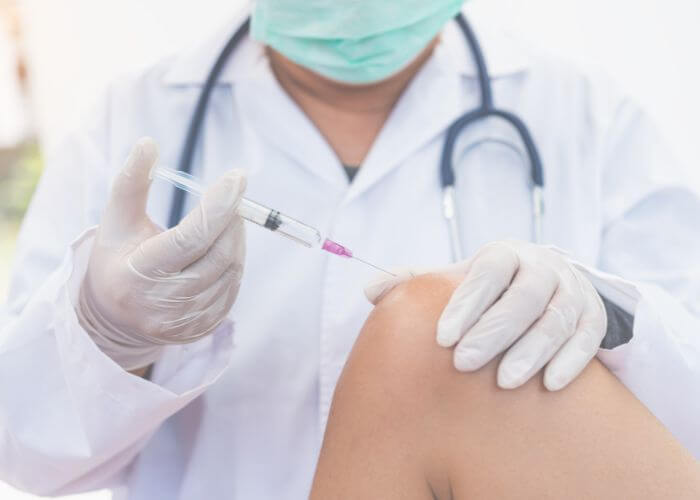What is platelet-rich plasma?
There are a number of small components located in the blood supply that circulate throughout the body. However, these components, namely the red blood cells, white blood cells, and platelets, account for only a fraction of the blood supply as the majority is a liquid composition called plasma. Platelets are fragments of large bone marrow cells that contain numerous proteins, or growth factors, responsible for repairing injuries and, together with coagulation factors, play an important role in blood clot initiation.
The liquid portion of blood containing an increased concentration of platelets and growth factors is known as platelet-rich plasma (PRP). This concentration of platelets and growth factors can be 5 to even 10 times greater than the concentration naturally found in the blood supply. This natural biologic treatment is designed to reduce pain and inflammation, rebuild cartilage, and repair ligaments. Current research on platelet-rich plasma has shown this treatment to be a promising cost-effective alternative to surgery.

How does platelet-rich plasma work?
When a break in a blood vessel wall occurs, platelets react by clumping together to form a plug. This blood clot initiation, known as primary hemostasis, launches a cascade of actions from coagulation factors to revascularize the injury site and construct new tissue. Although the exact mechanism of how platelet-rich plasma operates is not yet known, research has shown platelet-rich plasma can accelerate the healing process by activating inherent immune system processes as well as providing the necessary components for building new tissue. Dr. Answorth A. Allen, treats patients in Manhattan, New York City, Westchester, Long Island and surrounding areas, who have experienced an injury that can be treated with platelet-rich plasma.
How is the platelet-rich plasma treatment prepared?
Preparation of the platelet-rich plasma begins by drawing blood from the patient. Due to the varying densities of the different blood components, the blood sample is placed into a centrifuge that spins rapidly to separate out the platelets. This concentration of platelets is then added back into the plasma and injected directly into the injury site.
Is treatment with platelet-rich plasma effective?
Although the future of platelet-rich plasma therapy is encouraging as a cost-effective treatment alternative for sports injuries, laboratory studies are still being conducted to evaluate the effectiveness of this biologic treatment. Platelet-rich plasma has been shown to improve the outcomes of certain tendon conditions in addition to a significant amount of literature documenting the considerable reduction in mild to moderate knee osteoarthritis symptoms. Though this cost-effective treatment alternative may not be successful for everyone, the following are factors that can determine the efficacy of platelet-rich plasma therapy:
- The patient’s overall health (i.e., age, activity level, and medical history)
- Acute injury vs chronic injury
- The injury site location
- The cellular composition of the platelet-rich plasma preparation
What conditions can be treated with platelet-rich plasma?
Patients are good candidates for this biologic treatment when other treatment measures have been unsuccessful. Platelet-rich plasma therapy has been shown to be beneficial for knee pain. Some of the other conditions currently undergoing assessment of platelet-rich plasma effectiveness are as follows:
- Osteoarthritis
- Chronic tendon injuries
- Muscle strains and sprains
- Pain and instability in various joints
- Joint injuries, specifically the shoulder, elbow, knee, and ankle
For more information on platelet-rich plasma biologic treatment, please contact the office of Answorth A. Allen, MD, orthopedic surgeon at the Hospital for Special Surgery (HSS), serving Manhattan, New York City, Westchester, Long Island and surrounding areas.






